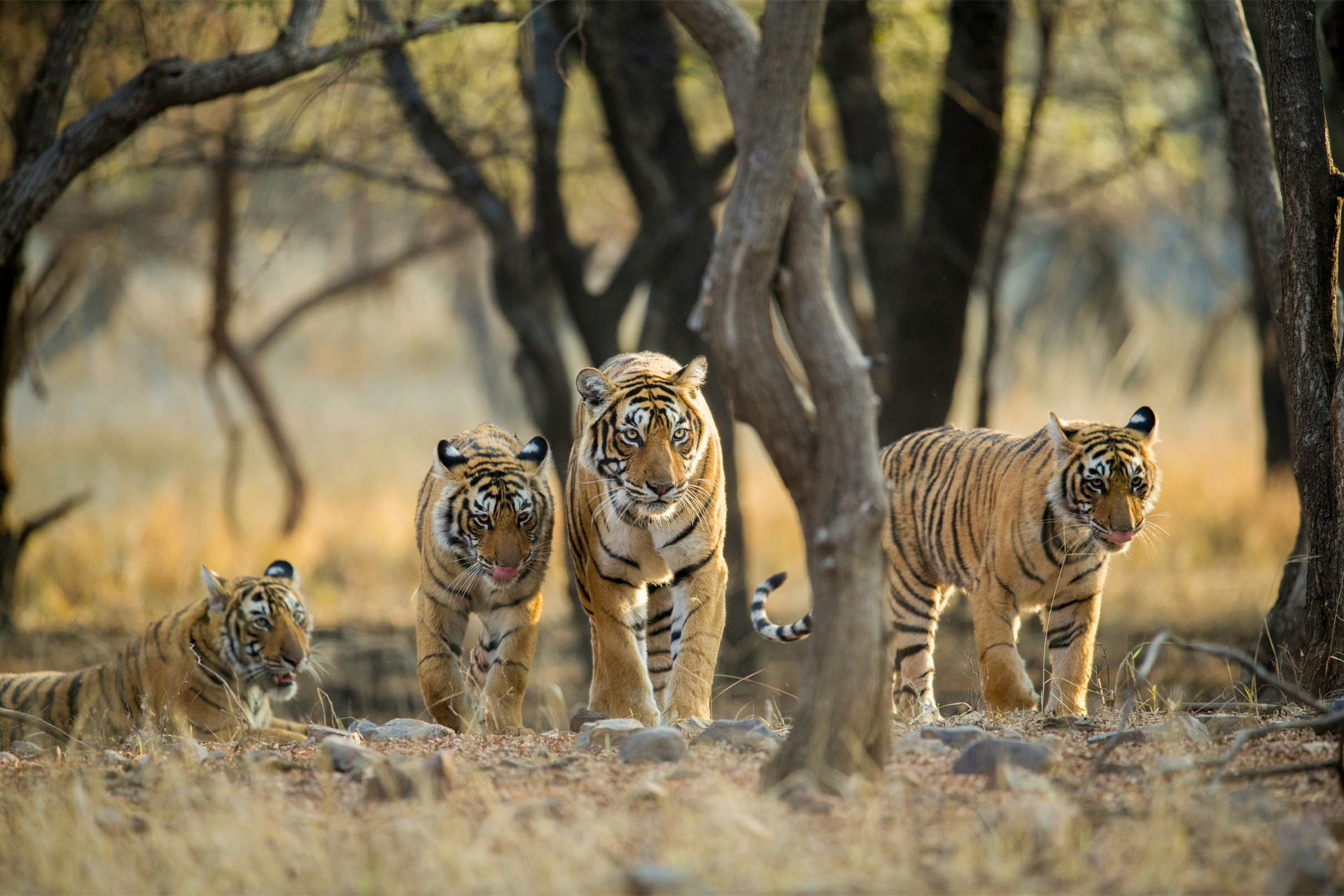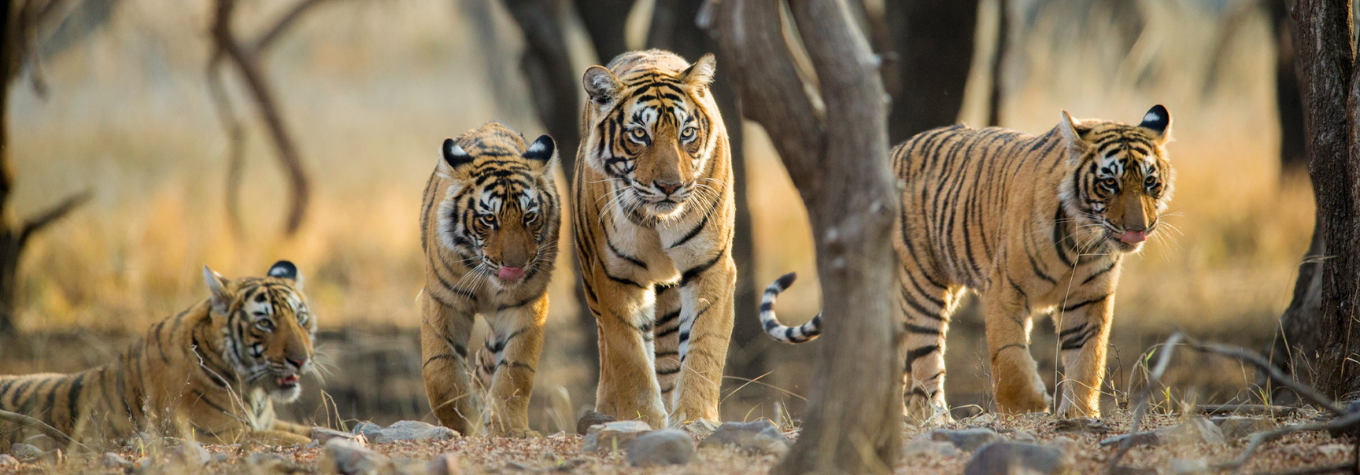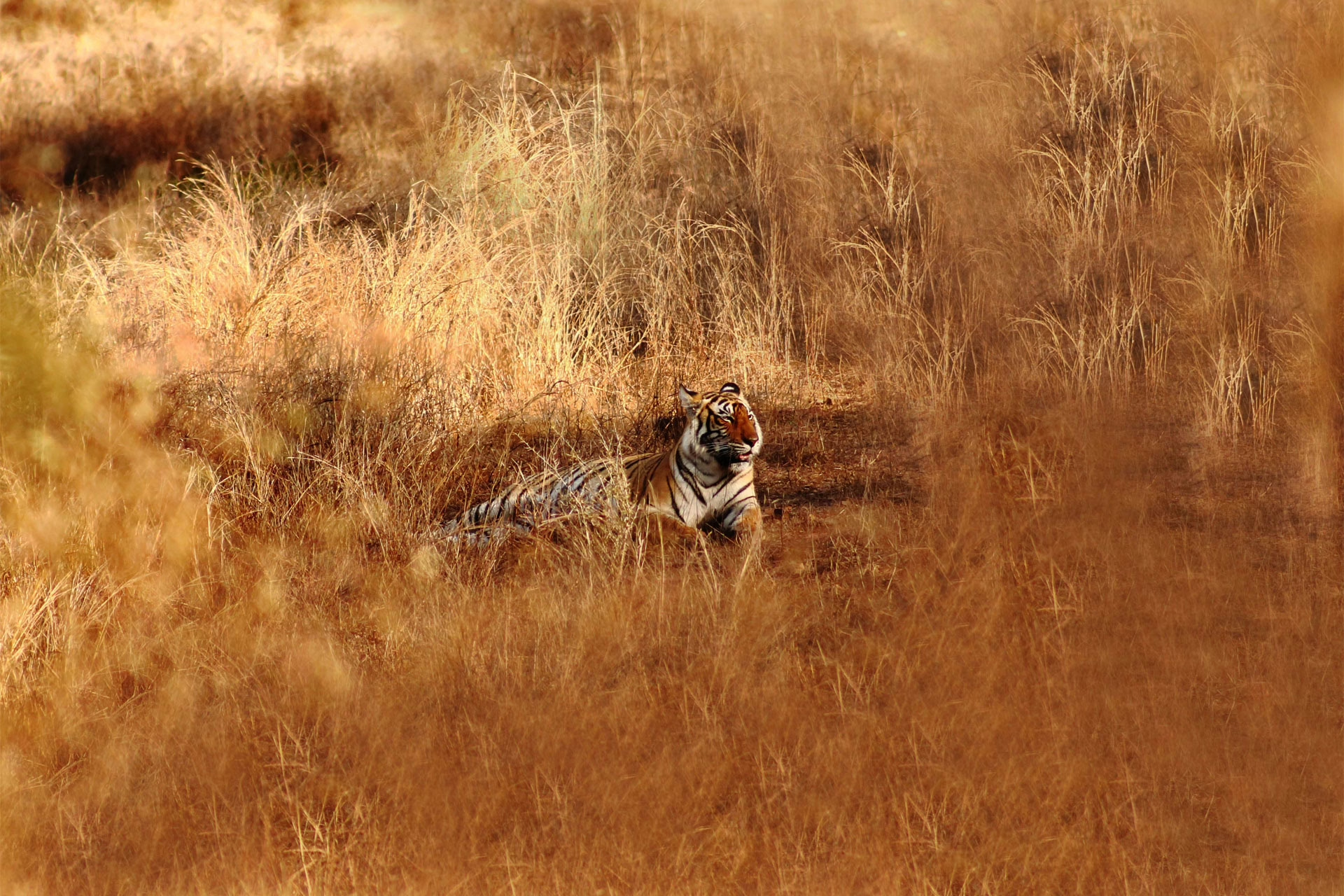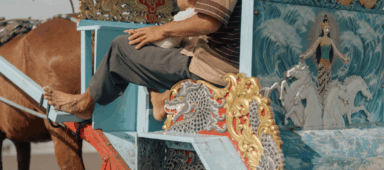From Delhi’s bustling streets to the wild heart of Rajasthan, a journey to Ranthambore Tiger Reserve reveals not just elusive big cats, but a living lineage tied to the world’s most legendary tigress
Three Maruti Suzuki Gypsy vehicles grind to a halt on the mud path in Ranthambore Tiger Reserve, the biggest and most renowned tiger reserve in the Indian state of Rajasthan, located in Sawai Madhopur and around 350km from Delhi‘s Indira Gandhi International Airport.
This scene is what we had all travelled for and you could hear a pin drop in the silence. The tiger, majestic in its orange-and-black stripes, stares back with disinterest.
We scramble to take pictures, clicking away in a fevered rush. Twenty minutes later, the tiger yawns, flicks its tail and walks away to become one with the forest.
The guide tells us that we’d just had a celebrity encounter – the tiger belongs to the family of Machli’s (aka T-16), considered the world’s most photographed tigress, a powerful and dominating Royal Bengal who once won a fight with a 14ft-long crocodile.
Machli was the park’s most famous resident – generating a whopping USD$100 million in revenue for the reserve in the span of 11 years – before she passed away in 2016.
Her lineage continues with her granddaughter T-84 or Arrow-Head (named for the arrow-shaped mark on her forehead) and great-granddaughter T-124 or Riddhi.

Out of the world’s dwindling tiger population, over 70% live in India, with 78 in Ranthambore, including Machli’s descendants.
As with all bucket list adventures, planning is key. The cooler winter months from October onwards are an ideal time to visit when the animals are more active. It’s a train ride from Delhi to the city of Sawai Madhopur; from there, a 30-minute drive to Ranthambore.
Apart from the magnificent native flora, see if you can spot the resident fauna: a tigress and her cubs on a walk or chasing prey, leopards stalking the area, deer feeding on the grass and sloth bears perched in the trees.
Want to visit Ranthambore? Here are three tips:
1. Book a reputable and ethical safari outfitter. Bookmark Resorts Jogi Mahal offers luxury accommodations (with plunge pools) and organises safaris. They are excellent at identifying which zones of the reserve offer the best chances of spotting these majestic animals.
2. Do visit the hilltop Ranthambore Fort. The Unesco World Heritage Site, famous for its Rajput architecture, from temples and palaces to reservoirs and cenotaphs.
3. Enjoy a meal of Rajasthani thali. This traditional food platter of dried lentils, beans and buttermilk is served along with spices and red meat.







